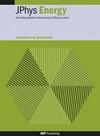Nuclear data for fusion: inventory validation successes and future needs
IF 6.3
3区 材料科学
Q1 ENERGY & FUELS
引用次数: 1
Abstract
Nuclear data, describing neutron reaction probabilities (cross sections) and decay behaviour, are critical to the design and operation of fusion experiments and future fusion power plants. Equally vital, are the inventory codes that use the data to predict neutron-induced activation and transmutation of materials, which will define the radiological hazards that must be managed during reactor operation and decommissioning. Transmutation, including gas production, combined with the neutron-induced displacement damage, will also cause the properties of materials to degrade, for example through swelling and embrittlement, eventually limiting the lifetime of components. Thus validated and accurate nuclear data and inventory codes are essential. For data validation there are decay heat measurements performed at FNS in Japan more than 20 years ago. The experiments produced an invaluable database for benchmarking of nuclear data libraries; the latest versions of several international libraries perform well against this data during tests with the FISPACT-II inventory code, although there is still scope for improvement. A recent attempt to provide fusion-relevant validation based on γ-spectroscopy data from neutron-irradiated material samples tests produced predictions for short-lived (several hours or less) radionuclides. The detailed analysis performed for molybdenum demonstrates how these data could eventually provide a new benchmark, and also illustrates the potential benefits of further experiments targeting the longer-lived radionuclides relevant to maintenance and decommissioning timescales. There are also some successful tests of transmutation predictions with FISPACT-II. These direct validations of inventory simulations are critical for lifetime predictions and future experiments should learn lessons from the examples described for tungsten, which demonstrate the importance of an accurate description of the neutron spectrum in experiments. More novel experimental techniques are needed to measure helium production in materials such as Fe and C, but the need to validate the nuclear data evaluations used by simulations should motivate future experimental efforts.用于核聚变的核数据:库存验证成功和未来需求
描述中子反应概率(横截面)和衰变行为的核数据对核聚变实验和未来核聚变发电厂的设计和运行至关重要。同样重要的是,清单代码使用数据来预测中子诱导的物质激活和嬗变,这将定义在反应堆运行和退役期间必须管理的辐射危害。嬗变,包括气体的产生,再加上中子引起的位移损伤,也会导致材料的性能退化,例如膨胀和脆化,最终限制部件的使用寿命。因此,经过验证和准确的核数据和库存代码是必不可少的。为了验证数据,有20多年前在日本FNS进行的衰变热测量。这些实验为核数据库的基准编制提供了宝贵的数据库;在使用FISPACT-II清单代码进行测试期间,几个国际库的最新版本对这些数据表现良好,尽管仍有改进的余地。最近一项基于中子辐照材料样品试验的γ光谱数据进行核聚变相关验证的尝试产生了对短寿命(几小时或更短)放射性核素的预测。对钼进行的详细分析表明,这些数据最终可以提供一个新的基准,也说明了针对与维护和退役时间尺度相关的长寿命放射性核素的进一步实验的潜在好处。利用FISPACT-II也有一些成功的嬗变预测测试。这些库存模拟的直接验证对于寿命预测至关重要,未来的实验应该从钨的例子中吸取教训,这表明了在实验中准确描述中子谱的重要性。需要更多新颖的实验技术来测量铁和碳等材料中的氦产量,但需要验证模拟所使用的核数据评估,这应该激励未来的实验努力。
本文章由计算机程序翻译,如有差异,请以英文原文为准。
求助全文
约1分钟内获得全文
求助全文
来源期刊

Journal of Physics-Energy
Multiple-
CiteScore
10.90
自引率
1.40%
发文量
58
期刊介绍:
The Journal of Physics-Energy is an interdisciplinary and fully open-access publication dedicated to setting the agenda for the identification and dissemination of the most exciting and significant advancements in all realms of energy-related research. Committed to the principles of open science, JPhys Energy is designed to maximize the exchange of knowledge between both established and emerging communities, thereby fostering a collaborative and inclusive environment for the advancement of energy research.
 求助内容:
求助内容: 应助结果提醒方式:
应助结果提醒方式:


